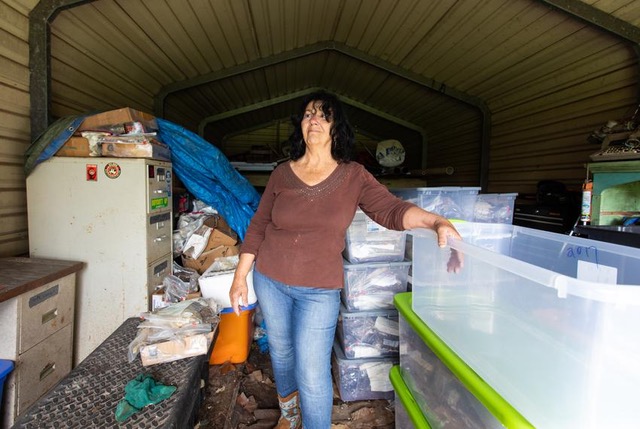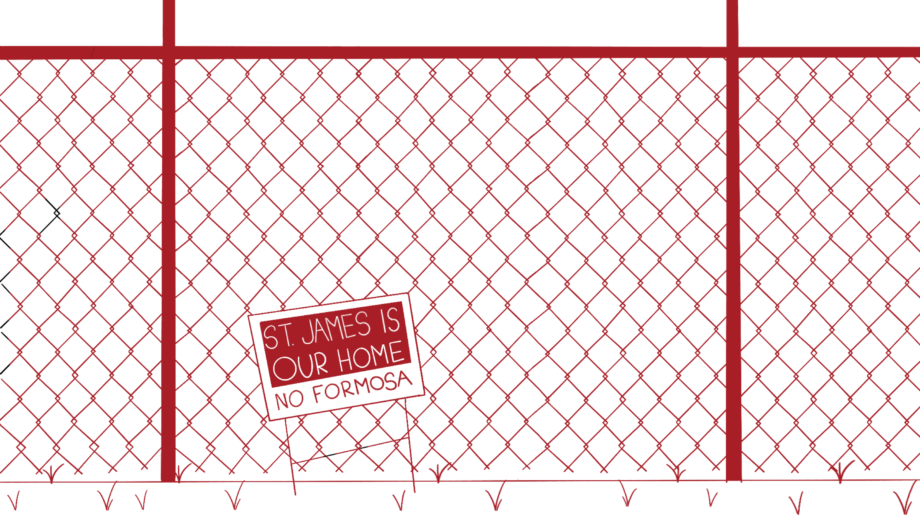Ethnographers and Civic Data Infrastructure
Insights From Environmental Activists
Formosa Plastics plays dirty. While that’s not surprising for one of the world’s largest petrochemical companies, it still provided rich content for the Netflix show Dirty Money. In an episode released in Spring 2020, viewers get a deep dive into the political power of the Taiwanese conglomerate. We also learn that the company is responsible for environmental disasters in Taiwan, Vietnam and the US. At the center of the episode, however, is a Formosa plant in the small city of Point Comfort, Texas, notorious for discharging plastic powder and small pellets into surrounding waters. The film crew follows retired shrimper-turned-activist Diane Wilson and her friends as they go out on the water in canoes, collecting evidence to put the bad guys on trial. And against all odds, the group wins a historic $50 million lawsuit and zero-discharge order against Formosa.

Fig. 1 Diane Wilson in her barn in Port Lavaca, Texas alongside boxes for storing plastic pellets she collects as evidence of Formosa’s on-going pollution. Behind Wilson are boxes of supporting documents collected over almost thirty years of activism in her community. Wilson used to be a shrimper on the Gulf of Mexico, piloting her own boat. Today Wilson continues to go on regular boat trips to collect plastic pellets (or “nurdles”) around the Formosa facility, part of which she donates to the civic science initiative NurdlePatrol. Given the frequency of extreme weather in the region — including the recent “unsurvivable” Hurricane Laura — the barn-as-archive is both impressive and precarious. Photo by Emree Weaver for The Texas Tribune (2019).
My PhD project focuses on digital data and infrastructure that communities need to effectively address entangled economic, environmental and public health challenges. Through research in diverse communities near petrochemical plants, I have come to see the importance of “civic data” (Fortun & Fortun 2019; Wiley et al. 2017) — data that is freely available and organized to be useful in characterizing and addressing social problems. Environmental civic data are data that help turn entangled economic, environmental and public health issues into matters of public concern.
In my research, I’ve learned about important data gaps but also about huge amounts of data collected by activists over years of work. Often this data is stored in activists’ homes, inaccessible to others working on related issues. I’ve thus also learned about the need for civic data infrastructure and begun asking questions about how such infrastructure should be designed, governed and sustained going forward.
In process, I’ve learned that data infrastructure has many layers and technical components (from data collection technologies to repositories, technical services, user agreements, visualization capabilities, etc.), and depends on many types of expertise. I’ve also learned that to build good civic data infrastructure, we’ll also need to continually reflect on what is needed, and on the limits and affordances of the infrastructures we’ve built so far. I’ve come to see civic data practices, expertise and infrastructure as an important focus for ethnographic research, with rich, politically important possibilities for collaboration with the communities ethnographers study.
Civic Data Across Systems and Scales
Fig. 2 includes questions that I’ve developed to orient ethnographic research on civic data infrastructure in different locations. The questions are open-ended, tuned for comparison and continually expanding as I learn about the many kinds of data collected, used and needed in activism to address Formosa. The questions also offer a way to organize civic data; they offer a way to structure the data in an digital archive so that it is discoverable by diverse users, helping them “see” Formosa in many different places.
My ethnographic research has included both empirical and design questions. In 2019, for example, I co-organized an ethnographic “Field Campus” focused on Louisiana’s “Cancer Alley”, a stretch of the Mississippi River where hundreds of petrochemical plants were built on top of former sugar plantations. In addition to staggering pollution, the area saw some of the highest COVID-19 mortality rates in the United States. There are also plans to build a new $9.5 billion Formosa facility, which would bring even more pollution to the area. A local activist group, Rise St. James, recently achieved a delay of the plant’s construction until February 2021, calling for a re-evaluation of the sacred slave burial grounds located on the site. The data used in this activism included independent archeological examinations (first initiated by Formosa), and later aerial photographs — demonstrating how diverse data relevant to environmental activism can be.
Civic data infrastructure needs to have a place for this kind of data — data that doesn’t have generalizable importance but is critical at the local level. Civic data infrastructure also, however, also needs to have global reach. Cancer Alley isn’t far from Point Comfort, but forging connections between the two sites is still difficult. Civic data infrastructure should be designed to help with this. Civic data infrastructure thus needs to be locally tuned and global in scope.

Fig. 2. Analytical set of questions to query Civic Data across scales and systems. For the digital version and responses to the analytic, see Schütz and Fortun (2019).
Building the Formosa Plastics Archive
Thanks to support by collaborators Wen-Ling Tu, Sonia Su and their team members at National Chengchi University’s International College for Innovation, I was able to obtain a visa for Taiwan, enabling a three-month fieldwork stay from October to December 2020. While I am currently undergoing two weeks of mandatory quarantine in a hotel in Taipei, the archiving work is already on its way. Coordinating remotely with Diane Wilson, and building on longstanding research in Kaohsiung and Yunlin County, we have already sketched out the contours of a Formosa Plastics Archive. Running on the Disaster STS Network, emerging data include interviews with Formosa workers in Texas and activist fishermen in Taiwan, internal company pollution reports, newspaper articles, visualizations and artworks.

Fig. 3 In its draft stage, the Formosa Plastics Archive makes use of the Disaster STS Platform’s collaborative tagging function, enabling a light coding process and a way of rapidly building collections (Screenshot: Tim Schütz). The analytic questions both orient ethnographic inquiry and help structure the digital archive. Moving forward, the archive will allow the creation of thematic collections and joint analysis. See for example this “timeline essay” curated by Sonia Su (2020), drawing on newspaper articles to document Formosa activism in different parts of Taiwan. The information architecture of the archive will also expand through iterative ethnographic design events, like the “para site” (Marcus).
Writing Culture with Archive Ethnography
I conceive of the Formosa Archive as an experiment in new forms of ethnographic expression and pedagogy beyond the monograph — a form of writing culture in the Anthropocene (Fischer 2018). For the project Visualizing Toxic Places (hosted by UCI’s Center for Ethnography), I am working on a photo essay that gets at Formosa as a multi-sited, toxic “place” in need for new forms of governance (for example updated right-to-know legislation).
Further, on 7 October, 2020, Kim Fortun and I launched a virtual exhibition and historic tour of Cancer Alley (Fig. 4).. The exhibit was developed in partnership with the Whitney Plantation Museum, a unique cultural institution focused on the lives and perspectives of enslaved people in Louisiana. Notably, Whitney Plantation was owned by Formosa until 1998, with the goal of building the world’s largest rayon factory (Seck 2014). Interfacing with the Formosa Archive, the exhibit is designed for students in the undergraduate course Environmental Injustice, opening a comparative angle for their own assigned case study research in California. Finally, the material will be made available as a resource for teachers at other universities.

Fig. 4 Illustration of a protest sign at Formosa’s latest construction site in St. James Parish, Louisiana. The so-called “Sunshine Project” (named after the nearby Sunshine Bridge across the Mississippi) poses many challenges. It points to the need for legislation that would prevent new polluting facilities in already highly polluted areas, as has been passed in some US states — legislation designed to prevent and help remediate sacrifice zones. Connecting communities around the world dealing with pollution from the same companies is another long-running challenge in the environmental movement — with renewed importance today with expected industry expansions because of the latest oil and gas boom. The virtual tour and collection — interlinked with the Formosa Archive — are designed to support this connection between communities facing environmental injustice. Illustration by Kora Fortun for the digital exhibition Sugar Plantations, Chemical Plants, COVID-19, 4 October 2020.
Research Futures and Para Sites
Over the next three months of field research, I hope to figure out some of the multiple challenges of the archive. For example, some of the material is part of ongoing lawsuits against Formosa, demanding careful use of the platform’s privacy and data sharing settings. Our own protection against the company’s rogue tactics are also of concern. Recently, two Louisiana activists were arrested with charges of terrorism, following the harmless political stunt of dropping a bag plastic “nurdles” on the doorstep of a known oil and gas lobbyist.
A possibility to focus these challenges is the format of the “para site” as articulated by George Marcus. Hosted by UC Irvine’s Center for Ethnography, such an event could (remotely) bring together archivists, lawyers, computer scientists, environmental activists and cultural producers that share similar concerns — like the team behind Dirty Money. Such seasoned filmmakers, for example, will bring substantive archival material to the project, but are potentially locked in by copyright issues. Carefully thinking through such issues is practical concern, but also produces ethnographic moments for better understanding the dynamics of civic data.
Ethnographers and Civic Data Infrastructure
The work that I’ve done to understand and help build civic data infrastructure supporting environmental activism what I’ve been calling “Archiving for the Anthropocene” — is technically enabled by open source software developed especially for ethnographers, the Platform for Experimental Collaborative Ethnography (PECE, pronounced “peace”). Many different instances of PECE — including http://disaster-sts-network.org/, where I’m working with my Formosa material — run on servers at the at the University of California, Irvine; the design team is transnational and includes people with many different kinds of expertise. As “middleware” (Khandekar et al, in press), PECE infrastructures my research, providing research archive capacity, spaces for analytic collaboration, and allowing new forms of scholarly expression and communication. A key challenge going forward is tuning this kind of open source, open access research infrastructure further to the particularities of the Formosa case.
Written on 1 October 2020 and revised on 12 October 2020
Tim Schütz is a second-year PhD researcher in Anthropology at the University of California, Irvine. He studied Communication, Media and Cultural Studies at the University of Bremen and Bahcesehir University Istanbul. He also holds an MA in Science and Technology Studies (STS) from Goethe University Frankfurt. As a member of the Design Team for the Platform for Collaborative Ethnography (PECE), he focuses on project architecture and coordinating community outreach. Contact: tschuetz [at] uci.edu
References
Fischer, M. M. J. 2018. Anthropology in the Meantime: Experimental Ethnography, Theory, and Method for the Twenty‐First Century.. Durham, NC: Duke University Press.
Fortun, M. and Fortun, K., 2019. Thinking Across Strata. Exotic No More: Anthropology for the Contemporary World, 241-263
Khandekar, A., Khandekar, Aalok, Kenner A., Poirier, L., Morgan A., Fortun, K., and Fortun, M. In press. Infrastructuring Collaborative STS: A Middleware Methodography. https://worldpece.org/content/infrastructuring-collaborative-sts-middleware-methodography
Seck, I., 2014. Bouki Fait Gombo: A History of the Slave Community of Habitation Haydel (Whitney Plantation) Louisiana, 1750-1860. UNO Press.
Wylie, S., Shapiro, N. and Liboiron, M., 2017. Making and doing politics through grassroots scientific research on the energy and petrochemical industries. Engaging Science, Technology, and Society, 3, 393-425.































